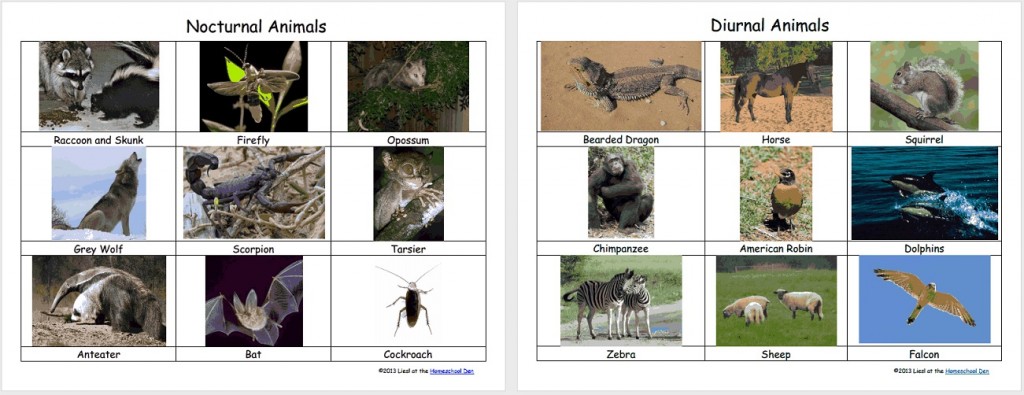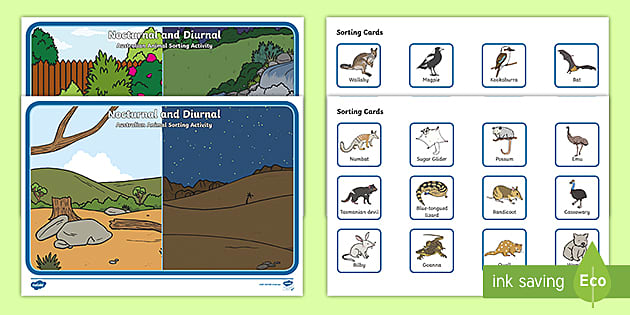


Sleep recordings in 127 mammalian species have revealed a rich array of phenotypes with respect to the temporal organization of rest/activity and sleep/wake patterns. This work links together a wide range of mammalian behaviors and sheds new light on their potential evolutionary underpinnings. Using a computational model, we demonstrated that a wide array of activity phenotypes can be captured in terms of just two hypothesized mechanisms: reshaping of the output of the brain's master circadian clock, and direct responses to light exposure. Despite the importance of activity patterns to all aspects of behavior and physiology, the mechanisms that underlie these patterns are not well understood. Mammalian species are remarkably diverse and flexible in their daily activity patterns, including a spectrum of diurnal (day-active) to nocturnal (night-active) and crepuscular (dawn/dusk-active) patterns. Environmental pressures such as light cycles, temperature cycles, food availability, and timing of predator activity selectively shape the activity patterns of different species. Given the ubiquitous effects of temporal organization on all aspects of animal behavior and physiology, this study sheds light on the physiological changes required to orchestrate adaptation to various temporal niches.Ĭontrolled timing of all daily activity patterns is a highly adaptive trait that allows an animal to exploit its particular ecological environment. In capturing these diverse phenotypes, the model provides a powerful new framework for understanding rest/activity patterns and relating them to underlying physiology. Finally, the model correctly predicted the SCN lesion phenotype in squirrel monkeys: loss of circadian rhythmicity and emergence of ∼4-h sleep/wake cycles. In addition, we successfully reproduced diurnal/nocturnal switching in the rodent Octodon degu using coordinated inversions in both masking and circadian modulation. Intriguingly, we also uncovered a novel mechanism for crepuscular behavior: if DMH/VLPO and DMH/LHA projections act cooperatively, daily activity is unimodal, but if they act competitively, activity can become bimodal.
Diurnal vs nocturnal animals full#
Modulation of SCN output at the SPZ was found to generate a full spectrum of diurnal-to-nocturnal phenotypes. Using this model, we generated rich phenotypes that closely resemble experimental data. In our model, SCN output is relayed via the subparaventricular zone (SPZ) to the dorsomedial hypothalamus (DMH), and thence to ventrolateral preoptic nuclei (VLPO) and lateral hypothalamus (LHA). To address this, we developed a computational model to simulate the two mechanisms and their influence on temporal niche. These two mechanisms are difficult to disentangle experimentally and their respective roles remain unknown. Two mechanisms have been proposed to account for this diversity: (i) modulation of SCN output by downstream nuclei, and (ii) direct effects of light on activity. The SCN is remarkably consistent in structure and function between species, yet mammalian rest/activity patterns are extremely diverse, including diurnal, nocturnal, and crepuscular behaviors. In mammals, these rhythms are generated by pacemaker neurons in the suprachiasmatic nucleus (SCN) of the hypothalamus. Then run your mouse over the picture and click to learn about something that interests you.Circadian rhythms are fundamental to life. To begin your adventure, click below on either the nocturnal drawing or diurnal drawing. You can also learn about some of the very special plants that live in this area. In our new Sonoran Desert Seek and Find you can choose to find information about nocturnal or diurnal animals. During the winter months when it is cold outside, many animals will hibernate or be less active. In the heat of the day many diurnal animals will rest in the shade of a plant or under a rock. Some animals can be both! In the Sonoran Desert, many animals are active at night because it is a good way to avoid the extreme daytime temperatures. Nocturnal animals are usually awake and active during the night. Exactly what you see will depend on the time of year and the time of day you are looking.ĭo you know the difference between a diurnal and a nocturnal animal? Animals that are diurnal are usually awake and active during the day.

If you visit the Sonoran Desert you will see many different types of animals and plants.


 0 kommentar(er)
0 kommentar(er)
